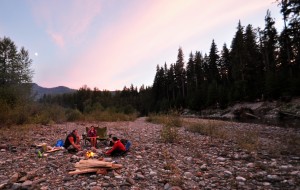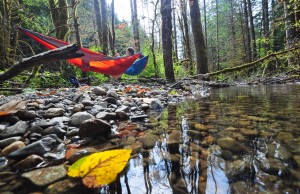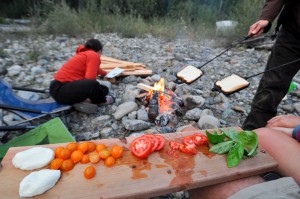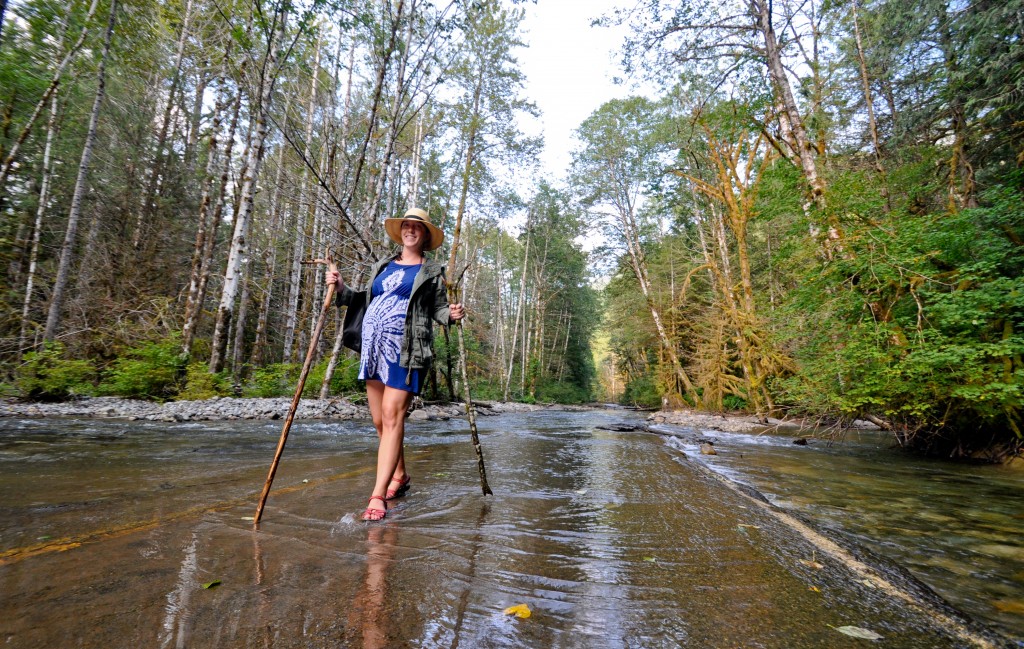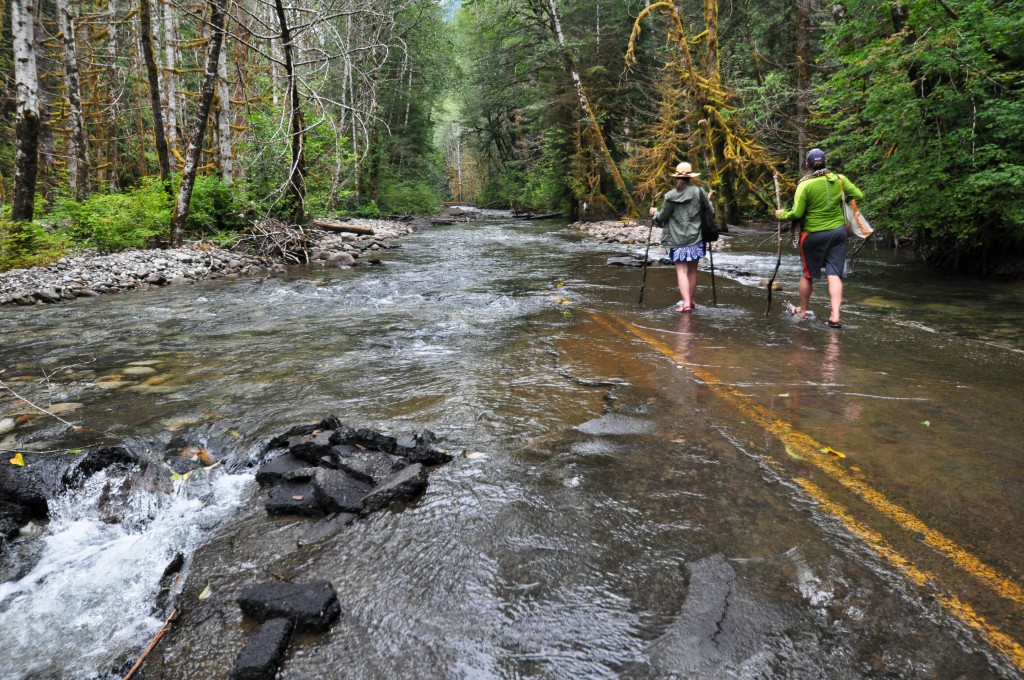
Exploring a flooded roadway in the Mt. Baker Snoqualmie National Forest for a little time away from the summer crowds
Tell me if this sounds familiar: you plan a weekend camping trip, reserve a space at a state campground, and spend the entire time hating all the people around you.
It’s strange isn’t it? In order to “enjoy nature” we pack ourselves into tiny designated camping spots, with RV’s jammed so close together they look like tenement housing in China.
I remember one such weekend outing a few years ago when I woke up at 6:00AM to the sound of a 10-year-old kid chopping wood inches from my tent.
Call me crazy, but that just doesn’t feel like camping.
That’s why this time of year when the campgrounds are packed (and it’s nearly impossible to get a site anyway) we zig where others zag.
One of the great secrets of camping is that while campgrounds are crawling with screaming children and blaring music, there are untold miles of pristine wilderness sitting perfectly empty.
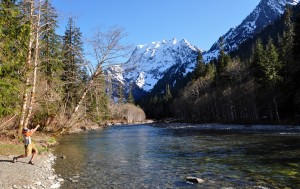
Plenty of riverbed camping is available just off the road along Washington State’s Mountain Loop Highway
National Forests (and to a lesser extent BLM and DNR lands) are huge swaths of land owned and managed by the government. The stated purpose is to provide a myriad of opportunity for the public from Christmas tree cutting to hiking to horseback riding. While not quite parks, often these lands surround national parks or are found in mountain ranges or other rugged terrain. For the average summer camper hoping to get away from summer throngs, they’re the perfect place to find last minute solitude.
The rule of thumb, is that if you can find a flat space big enough for your tent, you have a campsite for the night. The first time I heard this, I thought this was too good to be true, but since then, I’ve confirmed this fact with several rangers. Unlike national parks where the assumption is “no camping unless otherwise noted” the reverse is true in National Forests. You’re free to camp wherever you wish unless it a sign specifically states “no camping.”
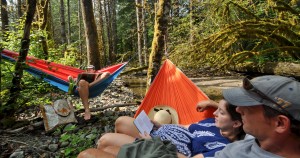 Consider this past weekend as a perfect example. Mid-August is not a great time to find last minute openings in the northwest. We searched all week for last minute getaways, and came up with empty. So instead, we decided to explore a river basin near the town of Index, which was surrounded by National Forest. Ten miles down the road, a washout left the blacktop in tatters, so we simply waded up the river a few hundred yards and found a serene little side channel to hang our hammocks for the day.
Consider this past weekend as a perfect example. Mid-August is not a great time to find last minute openings in the northwest. We searched all week for last minute getaways, and came up with empty. So instead, we decided to explore a river basin near the town of Index, which was surrounded by National Forest. Ten miles down the road, a washout left the blacktop in tatters, so we simply waded up the river a few hundred yards and found a serene little side channel to hang our hammocks for the day.
Had Amanda not been eight and a half months pregnant, we would have camped for the night and been perfectly happy with our isolated little spot. But the point is, there are almost limitless opportunities for this kind of mini-adventure.
We often drive down remote forest service roads or search out rivers in NFS lands for sandbars that make perfect overnight locations.
Generally speaking, you will need a parking pass (annual passes run $30 in our area) and a nose for uncovering the best locations, but stumbling upon a terrific site is part of the fun. Our atlas is now marked up with tiny X’s where we’ve stealth camped for a night or two, and we’ve all but given up any thought of using state campgrounds ever again.
